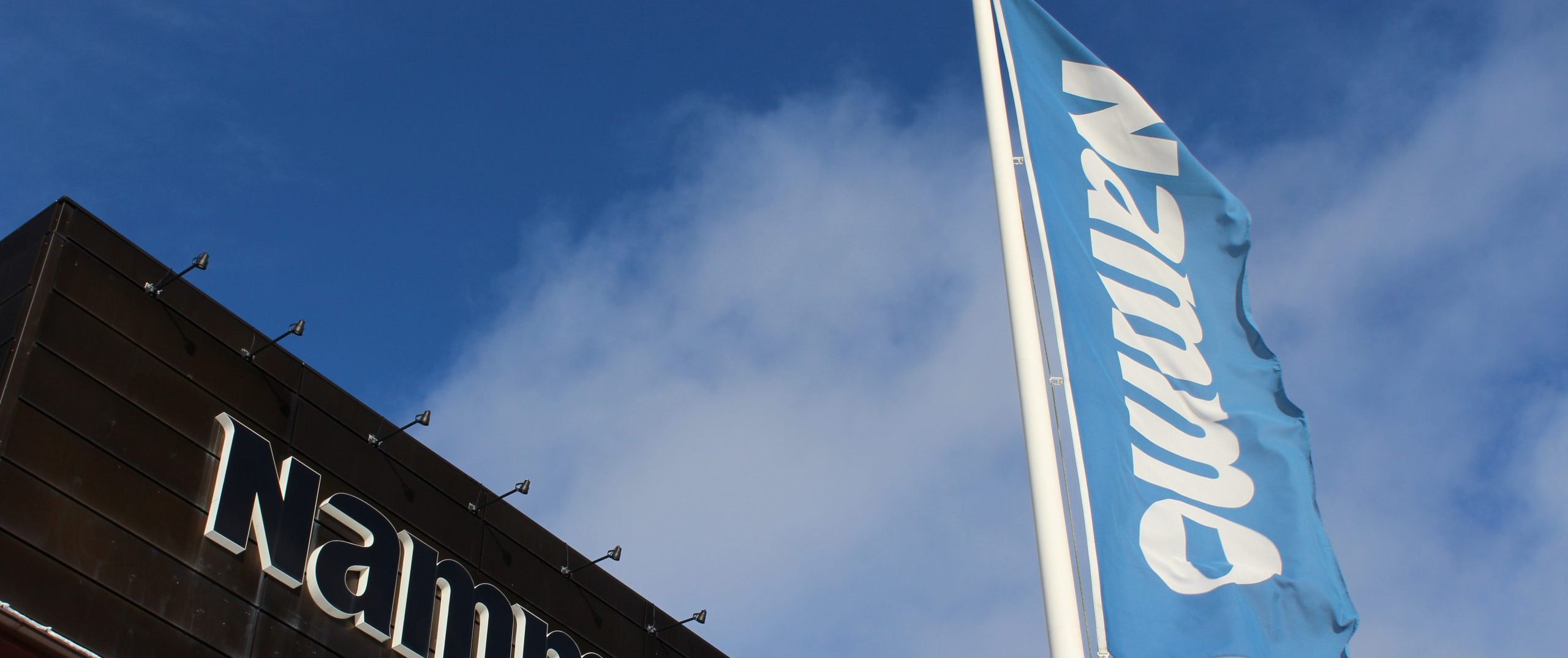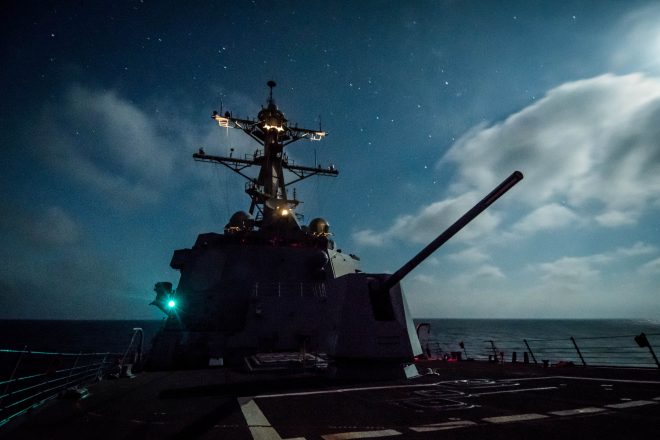I directed Anadolu Agency about the issue. If management approves, or if they find it worthwhile to interview the company, then we'll be able to find out the truth of the matter.3000m/sec muzzle velocity means almost 9 Mach.
BAE’s Hyper Velocity Projectile project achieves close to this sort of speeds with 127mm and 155mm rounds with precision guidance. They use specially designed projectiles with extra low drag.
Short of electromagnetic propulsion/rail gun , it is not possible with current tech to achieve this sort of muzzle velocities. BAE achieve 5+Mach muzzle velocities with low resistance aerodynamic shell designs. There are attempts with shells that contain ramjets to achieve high speeds.
Unless the makers of “ebabil” come up with how they achieved such high muzzle velocities, they will be met with scepticism and their discovery being treated as hoax. Also they need to show the firing of such rounds rather than final result.
Such high muzzle velocities can have an incredible detrimental effect on gun barrels.
The HC-ARGE has to provide answers to these questions before they can have credibility in what they are claiming they discovered.
You are using an out of date browser. It may not display this or other websites correctly.
You should upgrade or use an alternative browser.
You should upgrade or use an alternative browser.
My friends, whose knowledge on the subject I trust, said that they reached the level of 12.7 mm with 7.62 mm, whose core is depleted uranium.3000m/sec muzzle velocity means almost 9 Mach.
BAE’s Hyper Velocity Projectile project achieves close to this sort of speeds with 127mm and 155mm rounds with precision guidance. They use specially designed projectiles with extra low drag.
Short of electromagnetic propulsion/rail gun , it is not possible with current tech to achieve this sort of muzzle velocities. BAE achieve 5+Mach muzzle velocities with low resistance aerodynamic shell designs. There are attempts with shells that contain ramjets to achieve high speeds.
Unless the makers of “ebabil” come up with how they achieved such high muzzle velocities, they will be met with scepticism and their discovery being treated as hoax. Also they need to show the firing of such rounds rather than final result.
Such high muzzle velocities can have an incredible detrimental effect on gun barrels.
The HC-ARGE has to provide answers to these questions before they can have credibility in what they are claiming they discovered.
Which country could supply with depleted uranium?My friends, whose knowledge on the subject I trust, said that they reached the level of 12.7 mm with 7.62 mm, whose core is depleted uranium.
Depleted uranium quality. I didn't mean to say that depleted uranium was used.Which country could supply with depleted uranium?
What is meaning? I'm sorry, but this project still sounds fraudster job to me.Depleted uranium quality.
At the beginning of the video, the official of the company was talking about establishing a shooting range for the TAF and Special Forces. Again, in the continuation of the video, he showed the pictures on the wall and said that they were testing their 155 mm bullet technology with the Fırtına howitzer. So it doesn't seem silly to me.What is meaning? I'm sorry, but this project still sounds fraudster job to me.
Anyway, when Anadolu Agency meets with the company, what is real will be revealed.
That's the problem, he showed pictures, not the video itself. I wouldn't believe this unless they took an ordinary 7.62 and see it having the effect of a 12.7 on video, without any cuts.he showed the pictures on the wall
In their website, there is a video news that was done by TV100. You can check it out. It does look like they tried live with camera crew presence. In fact, whatever they showed on IDEF, was done on this news program
I found the youtube link. This was posted 3 years ago
I found the youtube link. This was posted 3 years ago
IMO absolutly fraud.
There is an alternative to depleted Uranium made from an exotic alloy of Tungsten.
Shells made from it sharpen as it hits target and it is pyrophoric (burns as it loses cohesion)
US is working on it to replace the Depleted Uranium shells. Since Tungsten is not radioactive it is safer for those that use it.
But just to have a different core would not necessarily increase the muzzle velocity of a round.

 www.newscientist.com
www.newscientist.com
Shells made from it sharpen as it hits target and it is pyrophoric (burns as it loses cohesion)
US is working on it to replace the Depleted Uranium shells. Since Tungsten is not radioactive it is safer for those that use it.
But just to have a different core would not necessarily increase the muzzle velocity of a round.

'Safe' alternative to depleted uranium revealed
Controversial anti-tank shells tipped with depleted uranium may be phased out if an alternative material proves its worth. The US Army is expected to award a contract this week for the manufacture of prototype ammunition incorporating a "liquid metal" alloy. The new rounds could be in service...
İn this video bullets are made of tungsten semi copper jacketed.In their website, there is a video news that was done by TV100. You can check it out. It does look like they tried live with camera crew presence. In fact, whatever they showed on IDEF, was done on this news program
I found the youtube link. This was posted 3 years ago
The problem is tungsten AP ammunition has been using for a long time. İt's not a big deal.
On the other hand tank rounds have already steel penetrators.
Tungsten core can't increase the velocity.
İt must be new type of propellant.
EDİT
@Yasar
When Ebabil artillery round is fired in the video, it seemed to me like rocket launching.

Base bleed - Wikipedia

Reaching farther - hitting harder - Nammo
Last edited:
Base bleed and rocket assisted shells are quite different. Base bleed works in a totally different manner to rocket assisted shells. Base bleed is there to increase range, typically by about 20–35%. It expels gas into the low pressure area behind the shell to reduce base drag (it does not produce thrust; if it did it would be a rocket-assisted projectile). Because of it’s nature you lose a little bit of accuracy. This type of shell, as it decreases drag, it detains more of it’s initial momentum and can hit targets harder and farther.When Ebabil artillery round is fired in the video, it seemed to me like rocket launching.
Rocket Assisted Projectiles (RAP) however , have a small rocket engine to provide extra thrust and range. Including US army a number of militaries use these shells in their howitzers.
It would be expensive and difficult to incorporate these two technologies in to, especially smaller caliber rounds.
By designing a more aerodynamic shaped core/round it is possible to substantially increase the range of that round. BAE Systems and US Navy have proven this with the introduction of Hyper Velocity Projectiles (HVP)
View attachment 1691660948137.jpeg

Navy Quietly Fires 20 Hyper Velocity Projectiles Through Destroyer’s Deckgun - USNI News
Last summer USS Dewey (DDG-105) fired 20 hyper velocity projectiles (HVP) from a standard Mk 45 5-inch deck gun in a quiet experiment that’s set to add new utility to the weapon found on almost every U.S. warship, officials familiar with the test have told USNI News. The test, conducted by the...
If this ebabil is not a hoax, then the secret may lie in the design of it’s shape and the materials used in the core.
I think Ebabil is just base bleed design , not a rocket assisted. At least small caliber bullets must be base bleed.Base bleed and rocket assisted shells are quite different. Base bleed works in a totally different manner to rocket assisted shells. Base bleed is there to increase range, typically by about 20–35%. It expels gas into the low pressure area behind the shell to reduce base drag (it does not produce thrust; if it did it would be a rocket-assisted projectile). Because of it’s nature you lose a little bit of accuracy. This type of shell, as it decreases drag, it detains more of it’s initial momentum and can hit targets harder and farther.
Rocket Assisted Projectiles (RAP) however , have a small rocket engine to provide extra thrust and range. Including US army a number of militaries use these shells in their howitzers.
It would be expensive and difficult to incorporate these two technologies in to, especially smaller caliber rounds.
By designing a more aerodynamic shaped core/round it is possible to substantially increase the range of that round. BAE Systems and US Navy have proven this with the introduction of Hyper Velocity Projectiles (HVP)
View attachment 60032
View attachment 60033

Navy Quietly Fires 20 Hyper Velocity Projectiles Through Destroyer’s Deckgun - USNI News
Last summer USS Dewey (DDG-105) fired 20 hyper velocity projectiles (HVP) from a standard Mk 45 5-inch deck gun in a quiet experiment that’s set to add new utility to the weapon found on almost every U.S. warship, officials familiar with the test have told USNI News. The test, conducted by the...news.usni.org
If this ebabil is not a hoax, then the secret may lie in the design of it’s shape and the materials used in the core.
As you know terminal stage velocity of bullet drops dramatically due to drag. Using base bleed gives consistent and high velocity.
To me, trail seems little bit unusual for a Sounding Rocket.
the launch video. Isn’t a MRBM ?
- hybrid rocket 100 kg low orbit satellite launch
-Siper
-Tayfun
-Cenk
-one of Roketsan's or Sage's unknow projcet
Answer can be ONE of them or ALL of them
- Biggest NOTAM so far?
-Area is divided to 3 sections
-Siper
-Tayfun
-Cenk
-one of Roketsan's or Sage's unknow projcet
Answer can be ONE of them or ALL of them
- Biggest NOTAM so far?
-Area is divided to 3 sections







